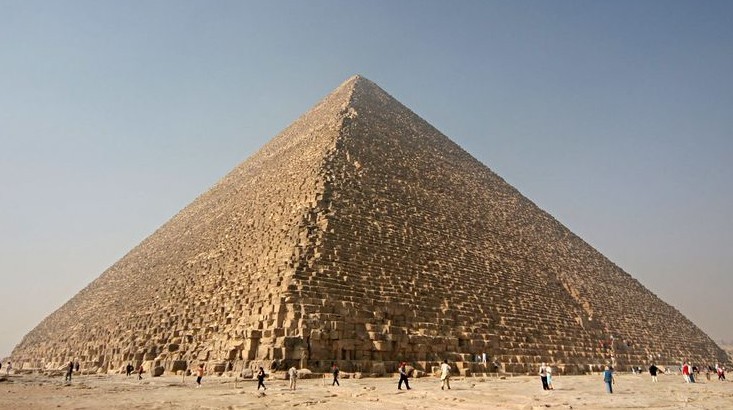Paul de Lagarde on Jews and Indo-Europeans, Part 2: Internationalism, Stock Exchanges, and the Media
That which speaks against the Jews, apart from the atavism and racial arrogance that by themselves force one to an unqualified rejection of the Jews, is first of all their internationalism. It is not true that the German, French, English, Russian Jews feel that they are members of the country in which they live; wherever possible they appear on the scene as sons of the Jewish nation and thereby they are the enemies of every European nation. Their declamations that things are different is believed by nobody. They stand on the same platform as the Jesuits and the Social Democrats: they are without a fatherland.
The second thing that speaks against them is their desire to bring in fellow racial comrades wherever possible. Wherever a Jew has set foot there are, in a short time, twenty Jews, and where there are twenty they rule, because members of cultured nations disdain the means used shamelessly by the Jews to acquire influence and because they are too considerate to express themselves freely and do not have the courage to act.
What thirdly turns the entire world against them is their usury, the term usury taken in the wider sense. I shall let men speak for me to whom nobody will deny the faculty of judgement, first Napoleon and then an advisor to a Prussian ministry. I became acquainted with Napoleon’s speeches and decrees only very recently but found to my great joy, however, that the man, who was truly perceptive, already in 1806 thought in the same way that any respectable German without exception thinks in 1887, in a radically anti-Semitic manner, in the sense of a double-sided humanity. I wish to help my countrymen through the printing of the speeches and decrees of Napoleon to help them to find the courage to say what they think and to translate it into deeds:
Meeting (of the Council of State) of 30 April 1806.[1]
Legislation is a shield that the government should carry everywhere where the public welfare is attacked. The French government cannot regard with indifference that a nation vilified, degraded, capable of every baseness, possess exclusively the two beautiful administrative departments of ancient Alsace; the Jews must be considered as a nation and not as a sect. It is a nation within the nation; I would like to remove from them, at least for a specific time, the right to take mortgages, for it is too humiliating for the French nation to find itself at the mercy of the vilest nation. Entire villages have been expropriated by the Jews; they have replaced feudalism; they are veritable flocks of crows. We saw them at the battles of Ulm[2] rushing from Strasboug to buy from the marauders what they had pillaged.
One should prevent, by legal means, the arbitrariness which one will find oneself obliged to employ with regard to the Jews; they would risk being massacred one day by the Christians of Alsace, as they have so often been, and almost always by their own fault.
The Jews are not in the same category as the Protestants and the Catholics. They should be judged according to political rights and not civil rights because they are not citizens.
It would be dangerous to let the keys of France—Strasbourg and Alsace—to fall into the hands of a population of spies who are not attached at all to the country. In the past, Jews could not even stay overnight in Strasbourg; it will perhaps be appropriate to decree today that there will not be more than fifty thousand Jews in the upper and lower Rhine; an excess of this number would spread at will into the rest of France.
One could also forbid them commerce based on what they have corrupted of it through usury and cancel their past transactions as tarnished by fraud.
The Christians of Alsace and the prefect of Strasbourg have brought to me many complaints against the Jews during my travel to this land.
Meeting of 7 May 1806
It has been proposed to me that the migrant Jews who do not merit the title of French citizens be expelled and the tribunals be invited to use their discretionary power against usury; but these means would be insufficient. The Jewish nation, since Moses, has been constituted in a usurious and oppressive way; it is not the same with the Christians: usurers are the exception among them and have a bad reputation. It is thus not with metaphysical laws that one will regenerate the Jews; here we need simple laws, laws of exception; one can propose nothing worse to me than to drive out a great number of individuals who are men like others; legislation can become tyrannical through metaphysics as through arbitrariness. Judges do not have discretionary power at all; they are physical machines by means of which the laws are implemented just as the hours are marked by the needles of a watch: driving out the Jews would be a weakness, correcting them would be a strength. One should prohibit commerce to Jews because they abuse it, just as one prohibits his profession to a goldsmith when he makes false gold. Metaphysics has misled the writer of the report to the point of preferring a violent measure of deportation to a more efficacious and gentle remedy. This law needs to be matured; one should assemble the general estates of the Jews, that is, summon fifty or sixty of them to Paris; I wish to have a general synagogue of Jews in Paris on 15 June.[3] I am far from wanting to do anything against my glory and that could be disapproved of by posterity—as they represent me as wanting to do in the report. My entire council gathered together cannot make me adopt a thing that would have this character; but I do not want the welfare of the provinces to be sacrificed to a principle of metaphysics and egoism. I state again that people do not complain of the Protestants or the Catholics the way they do of the Jews; it is that the evil that the Jews commit comes not from individuals but from the constitution of these people themselves; they are caterpillars, locusts that ravage France.
On 30 May 1806 appeared the famous decree through which Napoleon I summoned an assembly of individuals professing the Jewish religion and inhabiting the French territory to Paris; I extract the following from the official Bulletin des lois de l’empire franςais, 4,4 (1806), No.1631:
Based on the account that has been delivered to us that in many northern departments of our empire certain Jews, exercising no other profession but that of usury, have by the accumulation of the most immoderate interests thrown many farmers of these lands into a state of great distress,
We have thought that we should come to the aid of those of our subjects that an unjust cupidity has apparently reduced to these vexing extremities;
These circumstances have made us at the same time learn how urgent it was to reanimate, among those who profess the Jewish religion in the lands subject to our allegiance, the sentiments of civil morality which unfortunately have been weakened among too large a number among them by the state of subjection in which they have languished for long, a state that is certainly not our intention either to maintain or renew;
For the accomplishment of this design we have resolved to unite in an assembly the leaders of the Jews and to have our intentions communicated to them by commissioners who we will nominate to this end and will obtain, at the same time, their vows regarding the means that they estimate the most expedient to encourage among their brothers the exercise of the arts and of useful professions in order to replace by an honest industriousness the shameful resources to which many of them have delivered themselves from father to son for several centuries;
For these reasons,
In connection with the chief justice of the Ministry of Justice and our Minister of the Interior, Our Council of State included
We have decreed and decree the following:
First article: There is a stay of a year, counting from the date of the present decree, of all executions of judgements or contracts other than through simple protective action against the non-trading farmers of the departments of the Sarre, the Roer, Mont-Tonnerre, the Upper and Lower Rhine, of Rhin-et-Moselle, of the Moselle and the Vosges, when the debts against the farmers have been agreed upon by them in favor of the Jews.
One will find it understandable that this precise knowledge of their character excited the Jews. I point to unimpeachable evidence—of the geographer Karl Ritter—Bericht über die Aufnahme, welche Napoleon als Messias in Frankfurt am Main fand.[4] These Jews did not prostitute themselves before a “foreign potentate” since the Grand Duchy of Frankfurt under a Freiherr von Dalberg belonged at that time to the Rheinbund;[5] they immediately resorted even at that time to [HEBREW TERM], the presumption characteristic of their race—expressed so repugnantly in Heine and the press Jews of our age.
I cannot have the report cited in full which the Senior Privy Councillor Thiel made on “Usury in the provinces” of Prussia in the Farmers’ Club in Berlin on 1 March 1887; the material at the basis of the report will appear in an official publication; for the time being it is sufficient to point to the Vossische Zeitung of 3 March 1887; I deliberately cite a democratic newspaper that is friendly to the Jews. According to Thiel, in Alsace and Lorraine, about whose Jews Napoleon complained already so bitterly, it had become worse than it had been in the previous centuries. I have heard hair-raising things a long time ago—from a very insightful and benevolent party, a very highly-positioned man who was unreservedly candid with me—about the usurious Jews of the two provinces. For the conditions in the administrative district of Cassel it is significant that, in the first electoral district of Hesse, the long-serving Conservative representative was recently ousted by a newcomer who was able to gain the sympathies of the country people through fanatic anti-Semitism. It is a matter, besides, not only of money and credit usury but also of cattle usury, real estate usury, commodities usury. In the Bitburg district there are 91 professional cattle-lenders who have sold 1000 units of cattle to small folk. In Kreisbach district there are 700 loaned cows; the yearly turnover in the cattle loan business amounts to 105,000 Marks, the profit of the lender 35,000 Marks, thus around 34 percent, often 100 percent. The practitioners of usury are everywhere the same; the Senior Privy Councillor describes them, though actually every worldly-wise man knows about them. You may investigate or observe how many percent of these usurers are Jews! Where, in many places, I myself have been asked for help I have constantly found Israelites in my quest: once, at my request, a rich Jew, the father of one of my students, helped me kindly against the Jews.
It would take a heart of the hardness of crocodile skin not to feel compassion for the poor Germans sucked dry and—what is the same thing—not to hate the Jews, not to hate and despise those who—out of humanity!—make a case for these Jews or who are too cowardly to squash this usurious vermin. One does not negotiate with trichinae and bacilli, trichina and bacilli are also not educated, they are destroyed as quickly and fundamentally as possible.
In the summer of 1853, Prince Adam Czartoryski[6] came with his family to London. He was spied on by a Russian Jew whom I helped to expose. Since this Jew is still alive, and is a man of the upper class, I wish to remind him that he lived at that time in Jermyn Street (I think no. 23), that he was introduced by Baron Berg to the Alfred Club, that he had, at a matinée ball of an aristocratic house that he had sneaked into uninvited, insulted Prince Félix Salm-Salm,[7] and that he had disappeared as a result of a conversation that a woman of the English aristocracy conducted with the Russian envoy Baron Brunnow, at a party of the Marchioness of Breadalbane. Since 1853 I have never heard of a spy of the poisonous political sort who was not a Jew; today, when I write this, I am informed from a German capital of two new examples of this vermin.
How the Jews stand in relation to the press I do not need to tell anybody. The whole world knows that the majority of the reviewers of the political press of Europe, like the majority of the impresarios, are Jews. That these Jews do not express and disseminate the views of the peoples of Europe but those of the Jews is doubtless. Their success has become so great that they have been able to praise to the heavens a long series of Jewish and half-Jewish scholars, writers, musicians, actors, politicians but that they have also silenced or thrown dirt upon everything that did not bear la tarla giudiaca [the Jewish woodworm], that through them even the worldview of the educated people of Europe has been transformed from a European and Christian to an Asiatic and heathen one; for, ever since the Old Testament gave way to the New Testament and the Christian Church arose, the Jews are, in spite of the papier-maché monotheism, heathens.
In closest relation to the press stands the stock-exchange. To substantiate this, I refer to two articles of the Vossische Zeitung.
The above-mentioned newspaper wrote on the evening of 27 January 1887 from Paris:
It is an old trick of thieves to shout out the alarm-signal, “Fire!,” in a crowded theatre hall or church in order, in the midst of the frightful confusion that unfailingly ensues, to rake in a rich harvest of wallets and items of jewellery. That in the process dozens, sometimes even hundreds of men, are crushed, trampled upon, killed or made cripples for life is a matter of indifference to the criminals. The chief thing is that they can steal. Now then; it seems that there are nefarious stock-exchange speculators somewhere in the world who imitate this time-tested trick of rogues. At a moment when Europe is already nervous they suddenly shout out the signal “Fire!”; a wild panic seizes all stock-exchanges, the prices tumble like towers in an earthquake, families are thrown to the ground within an hour, assets disappear, bankers shoot a bullet in their head, an entire continent suffers an earthquake from which it cannot recover in weeks and which exercises its after-effects for a long time on the working life of nation; the rascals however who have wrought this calamity rake in millions that a timely discharge of all possible securities has yielded to them and are ready at the next suitable opportunity to repeat the scoundrel’s trick with greater force.
There is no other explanation for the crazy anxiety that gripped all European stock-exchanges yesterday but most of all the local ones. The notorious message of the London Daily News identified the relations between Germany and France as extremely menacing, declared that an imminent outbreak of war was most likely and concluded with the following words: “The first action will apparently come from the German side which will, in a short while, demand explanations from France about the recent troop movements at the German border.” There can be no doubt that this message came from stock-exchange circles and had the sole purpose of conjuring up a stock-exchange panic.
The same newspaper then declared solemnly, in the morning of 2 February 1887, that the belief that the member of the English parliament, Labouchère, had caused the message regarding an imminent war between Germany and France to appear in the Daily News for the sake of a dishonest stock-exchange speculation was erroneous. And, on 15 February 1887, the Vossische Zeitung returns to a similar story with the statements:
The well-known war-like article of the Post against Boulanger[8] supposedly owes its origin to a stock-exchange fiddling and yielded six million for its initiator.
The Deutsche Adelsblatt is supposed to have made this discovery and publicises it in the following manner:
Not only in England and France but also in Germany there are heinous stock-exchange speculators and we are assured by the best sources that the last article on ‘War in sight’ of a local newspaper was initiated and inspired not, as one would like people to believe, by the government or by diplomatic circles but by a local banking house which, one may remark by the way, is supposed to have earned six million thereby. It is the peculiar relationships, both of the intellectual initiators and of the abused—as we wish to assume without further ado—newspaper, that place on all who are named therein the inescapable obligation to delve into the causal connections ruthlessly and to draw the guilty to justice in the sharpest manner.’
In this context we may mention that the Kreuzzeitung explains that it was in no way edified by this, that the ‘stock-exchange rats’ made as if to move to the Conservative party. It threatens: ‘We will be able to get them off our back once again after 21 February. Court Chaplain Stöcker[9] has stated that on the 11th of this month in the most definite manner and we agree with him.”
In well-informed circles—that is clear from these articles that have not been troubled by any complaints from those affected and are therefore not to be attacked—one considers it possible that in the Daily News and in the Berliner Post, thus not in the gutter press, articles of the character described in the Vossische Zeitung can be slipped in. One who knows the history of the last Berlin Reichstag elections will find the thought process of the Vossische Zeitung in its article from 15 February fully clear: the article names the person without mentioning any name.[10]
I cannot believe that any respectable German can be interested in this way of gaining money and creating values. Only, I must conclude from the writing of the Privy King’s Counsel, Mr. Goldschmidt, full professor of mercantile law at Berlin University, thus certainly an expert, that stock-exchange businesses are conducted on a wide scope in Germany. I thought I knew that already a quarter of a century earlier; now I demonstrate the rightness of this fact with a quote from that Mr. Goldschmidt’s article on the “Reichstag elections,” 56:
All classes whose members wish to become rich without work take part, as is well-known, in the stock-exchange game, as in the at least as dangerous and corrupting house speculations and the like.
Through Bethel Henry Strousberg[11] the ‘speculations’ acknowledged by a professor of mercantile law have come into the highest circles of German society, and through a great host of other Jews—whose strenuously distributed offers, even to railway conductors, are known from hearsay by the whole world—have come among the so-called small folk. When Eduard Lasker, now buried among the pious in the synagogue in Weißensee, poured out a Niagara of outrage in the Prussian state parliament against the initiators, people thought at first that his fury was genuine; it soon emerged that his investigation stopped short of his friends, that the entire melodrama was only the legally authorized form of assassination of political opponents; but the fact that Germans placed in the highest positions in society speculate is also admitted by Lasker, indeed proven. I know a small city in which the Gründerzeit[12] cost the inhabitants around four and a half million Marks and scattered the percentages of this organised robbery to the Jews advising and helping in the enterprises and speculations, who alone gained in the economy, both in the formation and in the dissolution of businesses.
If the reader should not be satisfied with the Privy King’s Counsel Goldschmidt as a witness, I direct him to O.M.—everybody knows who O.M. once was in the National Zeitung—who is heard speaking in the weekly Im neuen Reich, 1876, 2,401–413. A highly positioned official (such is the one who speaks) cannot express himself more roughly than in the sentences written—judging from the style—in wild indignation:
This was precisely one of the most hateful and repulsive aspects of the recent German swindle era that the divide that separates honest folk from commercial criminality was blurred through a thousand golden bridges of profitable stock-exchange manoeuvres. … All shame disappeared; neither rank nor position nor good reputation, deterred one from dancing around the stock-exchange lists arm in arm with the riff-raff of fund speculators, stock-exchange jobbers, con-men.
The stock-exchange is also a curse for nations because it makes it possible for those working in it to gain wealth of previously unimaginable extent that is completely detached from any duty to serve any others than the one who owns it. A manorial lord requires, the greater his property is, the more men to work it; the financier can satisfy himself with heaping interest upon interest without having to give the least to anybody other than his broker. Even when he feasts and squanders he does not give. But he forces a number of men to the foolish desire, and the even more foolish attempt, to imitate the stock-exchange people in gluttony and pretensions, without a stock-exchange, from the yield of a small amount of money or from a salary: in the hearts of the unemployed, who are not yet taken to good colonies in well-arranged trains, such stock-exchange wealth awakens the desire, already often expressed, to kill the Jews. Woe to a nation in which such thoughts occur. We officials have in a way unthinkably high salaries; the stock-exchange causes that, as a consequence of the development of wealth made possible by the speculations of this temple of Baal, even a minister or a commanding general is no longer equal to the demands of society with that which the state provides him. It is, in my eyes, equally shameful—as apparently happened in Berlin 25 years ago—to give a servant maid little pay and declare then that, after 9 p.m., one should make no more demands on her, as to say to a scholar, if he cannot manage with his salary, that he should marry a rich Jewess or speculate in the stock-exchange. Do not act as if it were not so: this is not the place to be abashed.
The world owes the cloaca of stock-exchange speculation and of stock-exchange influence to the Jews.
[1] Lagarde: Pelet de la Lozère, Opinions de Napoléon (Didot, 1883), 213–217.
[2] The Battle of Ulm took place in 1805 between the armies of France and Austria. Napoleon succeeded in forcing the latter’s surrender.
[3] The Grand Sanhedrin of Jewish notables convened by Napoleon I took place in Paris between February and April 1807.
[4] Lagarde: “Report on the Reception that Napoleon Found in Frankfurt am Main as a Messiah,” in G. Kramer, Carl Ritter, ein Lebensbild, I (1870), 107; Janssen, Zeit- und Lebensbilder, 20–24. Somewhat later the Jews in Poland “of average salary” served their Messiah as “providers or informers”; Guizot, Revue des deux mondes, 70 (1867).
[5] The Rhenische Bundesstaaten was formed by Napoleon in 1806 as a confederation of protectorate German states that simultaneously left the Holy Roman Empire. It was disbanded in 1813 after the defeat of Napoleon in the Battle of Leipzig.
[6] Prince Adam Czartoryski (1770–1861) was a Polish nobleman who served as foreign minister to Tsar Alexander I when Poland was partitioned by Russia, Prussia and Austria.
[7] Prince Félix Salm-Salm (1828–1870) was a Prussian military officer who served in several armies including the Prussian, Austrian, the Union army in America, and the army of Maximilian I in Mexico.
[8] Georges Boulanger (1837–1891) was a French general whose staunch nationalism helped to foster anti-German sentiment (“revanchism”) in France after the latter’s defeat in the Franco-Prussian War of 1870–1871.
[9] Adolf Stoecker (1835–1909) was the court chaplain to Kaiser Wilhelm I and a leading anti-Semitic agitator of his day. He founded the Christlich-soziale Partei in 1878 to counter the growing influence of the Marxist Sozialdemokratische Partei Deutschlands (SPD) and participated in the international anti-Semitic congress in Dresden in 1882.
[10] LaGarde: That the Post can be mentioned in this connection is so much more regrettable as this newspaper occasionally also issues very important exposés. In it there appeared, on 8 April 1875, the famous article “Is War in Sight?” that one can read in the book of Mr. L. Hahn, Fürst Bismarck, 2, 774–776. In the Post there appeared also, on 10 September 1886 (No.247), the article signed by a retired Prussian officer and doctor of philosophy from Sofia:
Everybody familiar with the local conditions knew that the present Russian military attaché of the consulate general whom Court Chaplain Koch mentioned in his well-known “Dispatch from Lemberg” was the organiser of the conspiracy; I could have conveyed this to the Post even in my first letter to the Post. But since this attaché is an active Russian officer, I did not do this for obvious reasons and mentioned rather the Bulgarian-born lieutenant colonel Kesiakoff discharged from the Imperial Russian military service who in person publicly led the instigation of the masses after the departure of the legitimate prince.
[11] Bethel Henry Strousberg (1823–1884) was a German Jewish industrialist who, already early in his career, embezzled clients’ funds while working as an agent for some societies in Germany. He was convicted and imprisoned for this crime but was later involved again in dubious manipulations of stocks during his career as a major railway entrepreneur in Germany.
[12] Literally, the Period of the Founders, i.e., the period in the last quarter of the nineteenth century during which many new industries were founded in Germany.




 Angkor Wat and Chartres Cathedral (
Angkor Wat and Chartres Cathedral (


 Merde MAXXImale: Zaha Hadid and her MAXXI Museum in Rome (
Merde MAXXImale: Zaha Hadid and her MAXXI Museum in Rome (

/https://contest-public-media.si-cdn.com/02deab07-c044-46e5-b958-f5d28173d2ed.jpg)

 The Choir of Chartres Cathedral
The Choir of Chartres Cathedral The Sydney Opera house (
The Sydney Opera house (


